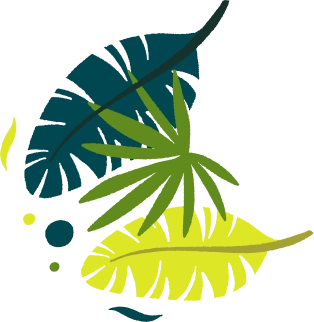


Does it ever snow in Vietnam? You might be surprised to learn that it does in fact but only in a few high places. In most of the country winters are mild, but the towering northern mountains see the occasional winter flurry. In this guide, we’ll show you where and when to find snow in Vietnam, plus tips on what to pack and how to plan. That way, if you’re dreaming of a snowy Vietnamese holiday, you’ll know exactly where to go (and what to expect).
Vietnam’s long shape means its weather varies a lot. The south is hot year-round, but northern winters (December to February) can be quite cool, especially in the mountains. The highest peaks like Fansipan and the Hoang Lien Son range often drop below freezing. These cold snaps make occasional snowfall possible on Vietnam’s tallest mountains although it’s usually brief and light.
We suggest you to check official Government weather site for accurate forecasts.
Sapa and Mount Fansipan (Lao Cai)
For a chance at snow, head to Sapa in the far north. This town sits in the Hoang Lien Son mountains, and just above it stands Fansipan which is Vietnam’s highest peak at 3,143m. In winter (especially late Dec–Jan), Fansipan’s summit often reaches freezing, sparking frost and light snow on the trails. Pictures of Sapa’s rice terraces with a dusting of white are truly breathtaking.
Mau Son Mountain
Another accessible snow spot is Mau Son, just 2 to 3 hours from Hanoi. Mau Son is a 1,541m peak near the Chinese border. Winter nights there often drop below 0°C, and fog turns into frost or even light flurries on cold mornings. If you visit on a cold winter day, you might catch bits of frost on the fields. It’s a popular day-trip for Hanoi residents who want a taste of winter without going too far.
Ha Giang (Dong Van Plateau)
Ha Giang province at Vietnam’s far north also gets occasional snow. Its famed Dong Van Karst Plateau (a UNESCO Global Geopark) towers around 1,400-1,600m. In cold winters, parts of Ha Giang (especially around Dong Van and the Ma Pi Leng Pass) can see light snow and frost, dusting the karst peaks. The beautiful Ha Giang Loop (motorbike route) in December often offers clear skies and even cloud inversions, with snowy peaks on the horizon.
Late December through January is usually the coldest period in Vietnam’s north and that’s is exactly when snow is most likely. But remember, snow in Vietnam is very unpredictable. It could fall just once or not at all some winters. Always check latest weather forecasts for Sapa or Ha Giang just before your trip.
Flexibility is key: if a cold front is coming, be ready to head into the mountains at a moment’s notice (seems a bit weird to say if you are from northern USA/Europe or Canada lol).
Preparation: Snow is rare and often comes with little warning. Check local mountain weather daily. Join a guided tour or talk to local guides in Sapa/Ha Giang as they often have the latest conditions and can arrange transportation if a snowfall is imminent.
What to Pack (Clothing & Gear): Pack warm layers including thermal underwear, a good fleece or down jacket, gloves, and a warm hat. Even if it’s sunny at lower altitudes, above 1,500m the wind chill is real. A waterproof outer layer is wise in case snow or sleet starts falling.
Transportation: Roads in the highlands can be steep and winding. In winter, haze or fog can reduce visibility. Only hire experienced drivers (or book a tour car). If riding motorbike, consider local rental services with winter gear. Always allow extra travel time; if there’s frost, the final kilometers up to Mau Son or Fansipan cable car may be slower.
Accommodation: Sapa and Ha Giang offer everything from homestays to mid-range hotels. Winter is a popular off-peak season, so you can often find deals but be prepared for very cold weekends (like Tet holiday) can still sell out. Book ahead if you plan to stay in a specific village or if you want a particular experience (e.g. a local homestay).
If witnessing snow proves elusive, Vietnam offers other enchanting winter experiences:
Sapa’s Cultural Festivals & Markets: Even without snow, Sapa is fascinating. It’s home to several hilltribe communities (Hmong, Dao, etc.). In winter, their markets and New Year festivals (Tet) are vibrant. Visiting Sapa’s villages and markets is a great cultural experience where you’ll see traditional crafts and clothing that few westerners get to see.
Hanoi’s Cozy Winter Charm (food, coffee): Hanoi doesn’t get snow, but winters are crisp and cool (often around 15°C daytime). The chilly weather makes Hanoi’s street food extra enjoyable so try a steaming bowl of pho or a cafe trung (egg coffee) while strolling the foggy Old Quarter. Winter festivals (like Tet in Jan/Feb) light up the city with markets and fireworks.
Halong Bay Winters: You won’t see snow at sea level, but winter mornings in Halong Bay can be enveloped in magical mist and low clouds. The limestone karsts rising out of the fog look like a scene from a fantasy. The ethereal winter light makes for some of the best photography in Halong, trust me!
Snow in Vietnam is rare but if you time it right (late December through January) and head north, you might just catch those magical white moments. Whether you see real snow or not, the northern highlands (Sapa, Mau Son, Ha Giang) offer stunning winter scenery and rich cultural experiences.Start planning your adventure now: check weather forecasts, pack warmly, and reach out to us for expert advice or guided trips and to learn about winter tours and make your Vietnam trip unforgettable (snow or shine)!
Q1: Does it snow in Vietnam?
A: Yes, but only rarely and only in high northern mountains. Most of the country stays warm year round; snowfall happens only on peaks like Fansipan, Mau Son and parts of the Dong Van plateau during strong cold snaps.
Q2: Where in Vietnam am I most likely to see snow?
A: The best places are Sapa / Mount Fansipan (Lao Cai), Mau Son (Lạng Son), and parts of Ha Giang (Dong Van Plateau). Other highland pockets such as Moc Chau and Y Ty can also get frost or occasional sleet.
Q3: What months does it usually snow in Vietnam?
A: The chance is highest in late December through January, with January often the coldest. Snow is unpredictable, so even in those months it may not fall every year.
Q4: Does it ever snow in Hanoi?
A: Snow in Hanoi is extremely rare. While a few reports and circulated photos claim flurries, reliable records show Hanoi usually only gets cold, misty weather. Many “Hanoi snow” photos on social media are edited or mislabelled.
Q5: Can you ski in Vietnam?
A: No. Vietnam has no commercial ski resorts or groomed slopes. Snowfalls are usually light and melt fast, so there are no ski facilities like you’d find in temperate countries.
Q6: How often does Fansipan or Sapa actually get snow?
A: It varies year to year. Fansipan/upper Sapa can see frost or light snow several winters out of ten, but heavy or long-lasting snow is rare. Expect short-lived dustings rather than sustained snowpack. (Estimate based on traveler reports and climate notes.)
Q7: Are the viral “snow in Hanoi” photos real or fake?
A: Many viral photos are edited or staged. Fact checkers have debunked specific Hanoi snow images; verify source and date before sharing. If in doubt, check meteorological reports for the date shown.
Q8: Will snow close roads or tours in northern Vietnam?
A: It can. Snow, frost and ice sometimes force closures of mountain roads, tourist sites or rides (and schools may close for safety). That’s why you should use experienced local drivers and build flexibility into your itinerary.
Q9: What is the best way to plan a “snow hunt” trip in Vietnam?
A: Travel in January, monitor mountain weather closely, book flexible accommodation and a local guide or operator who tracks conditions. Prioritize high-altitude spots like Fansipan and Ha Giang and be ready to move fast when a cold front arrives.
Q10: If I don’t see snow, what winter experiences shouldn’t I miss in Vietnam?
A: Winter offers rich cultural experiences and unique scenery: Sapa’s hilltribe markets, Hanoi’s cozy street food and egg coffee, and the misty winter atmosphere of Halong Bay. These are reliable winter highlights even without snow.
Get the latest information about our tours and special offers!